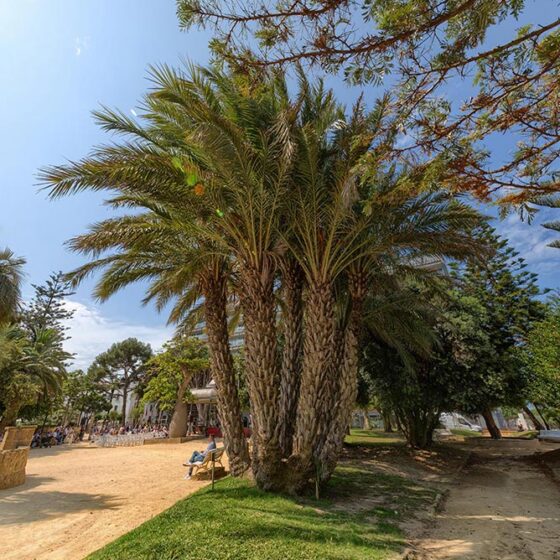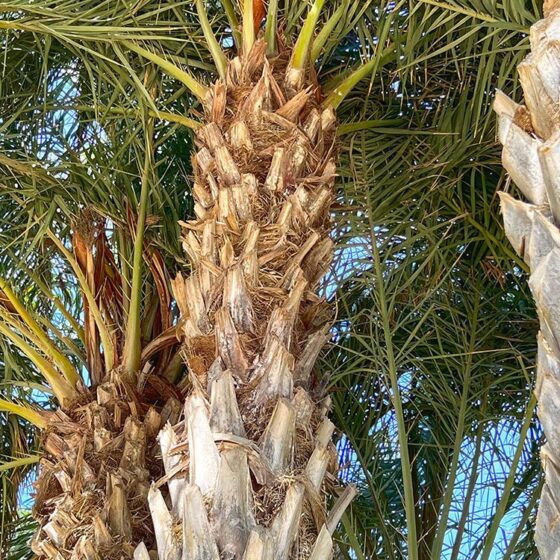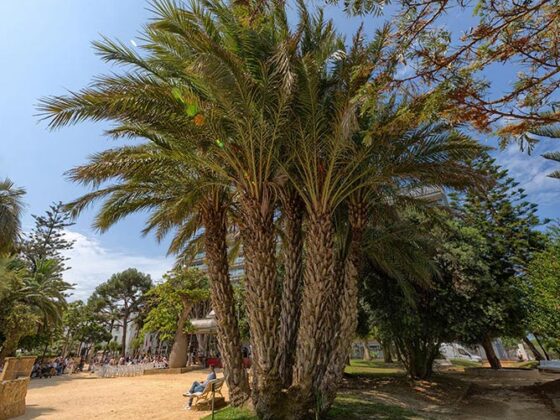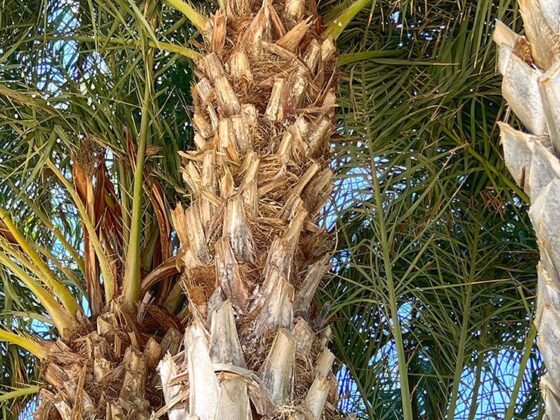Senegal date palm
Phoenix reclinata
The name of the genus, Phoenix, is the Greek name of the date palm that Teofastro has already used; according to some, Phoenix, in Greek = red purple, because of the colour of its fruits, others because the Greeks first met this plant in Phoenicia and according to others, because the leaves could remember the colour of the feathers of the mythological Phoenix, which are purple red. The specific, reclinata, tilted back, is due to the way their trunks grow.
Stipe thin and flexible, that emits numerous shoots forming branched groups from the base of the trunk. Pinnate leaves up to 4m long, bright green, with rigid petioles that are acuminate and sharp. It is a dioecious species, ie with male and female flowers growing separately, which are cream-coloured and gathered in clusters. The fruits are edible, small and reddish orange.
It reproduces well from seed; produces hybrids with other species of its genus. It develops in tropical, subtropical and temperate climates. Resists salinity well and tolerates drought. It is fast growing. It adapts to all types of soils that are permeable, in the sun and in the shade. It is possible that the branching and the production of thorns are due to a defence, developed as a natural response to the aggression to which they are subjected by herds of elephants.
Its presence in Cadiz is scarce, but there are two specimens in Genovés Park and other young descendants of these in the Paseo de Canalejas and in the Parque de los Cinco Continentes.







